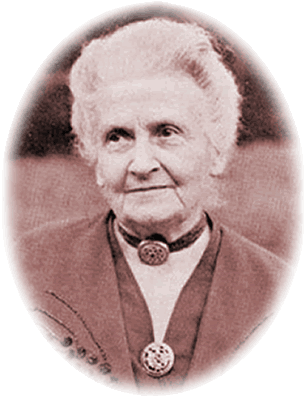A Brief Synopsis of the Montessori Method
The Montessori Method is an educational method for children, based on theories of child development originated by Italian educator Maria Montessori in the early 20th century. The method is characterized by an emphasis on self-directed activity on the part of the child and clinical observation on the part of the teacher. It stresses the importance of adapting the child's learning environment to his or her developmental level, and of the role of physical activity in absorbing academic concepts and practical skills. Montessori is not a system for training children in academic studies; nor is it a label to be put on educational materials. It is a revolutionary method of observing and supporting the natural development of children. Montessori educational practice helps children develop creativity, problem solving, critical thinking and time-management skills, to contribute to society and the environment, and to become fulfilled persons in their particular time and place on Earth.
Dr. Montessori felt that the goal of early childhood education should not be to fill the child with facts from a preselected course of studies, but rather to cultivate their own natural desire to learn. In the Montessori classroom this objective is approached in two ways: first, by allowing each child to experience the excitement of learning by their own choice rather than by being forced; and second, by helping the child to perfect all their natural tools for learning, so that their ability will be at a maximum in future learning situations. The Montessori materials have this dual long-range purpose in addition to their immediate purpose of giving specific information to the child.
Dr. Montessori always emphasized that the hand is the chief teacher of the child. In order to learn there must be concentration, and the best way a child can concentrate is by fixing their attention on some task the child is performing with their hands. All the equipment in a Montessori classroom allows the child to reinforce their casual impressions by inviting the child to use their hands for learning.
Dr. Maria Montessori
The Montessori method is a result of the experience and discoveries of Dr. Maria Montessori (1870-1952). Upon graduation as the first woman medical doctor in Italy, Dr. Montessori became interested in the education and training of special needs children.
Dr. Montessori's career began with a group of disadvantaged children in 1907 when she opened her famous Casa dei Bambini. Through her observations of and work with the children, she discovered their remarkable, almost effortless ability to absorb knowledge from their surroundings. Children teach themselves! This simple and profound truth inspired Dr. Montessori's lifelong pursuit of educational reform, curriculum development, methodology, psychology, teaching and teacher training, all based on her dedication to further the self-creating process of the child.
Dr. Montessori designed materials and techniques that allowed her children to work in areas previously considered beyond their capacity. Dr. Montessori's great triumph came when these children took state examinations along with other children, and her children excelled in the exam results.
Today, after almost 75 years of international application, the Montessori method thrives in the United States with more than 3,000 schools established since 1957.

Dr. Maria Montessori
1870-1952
